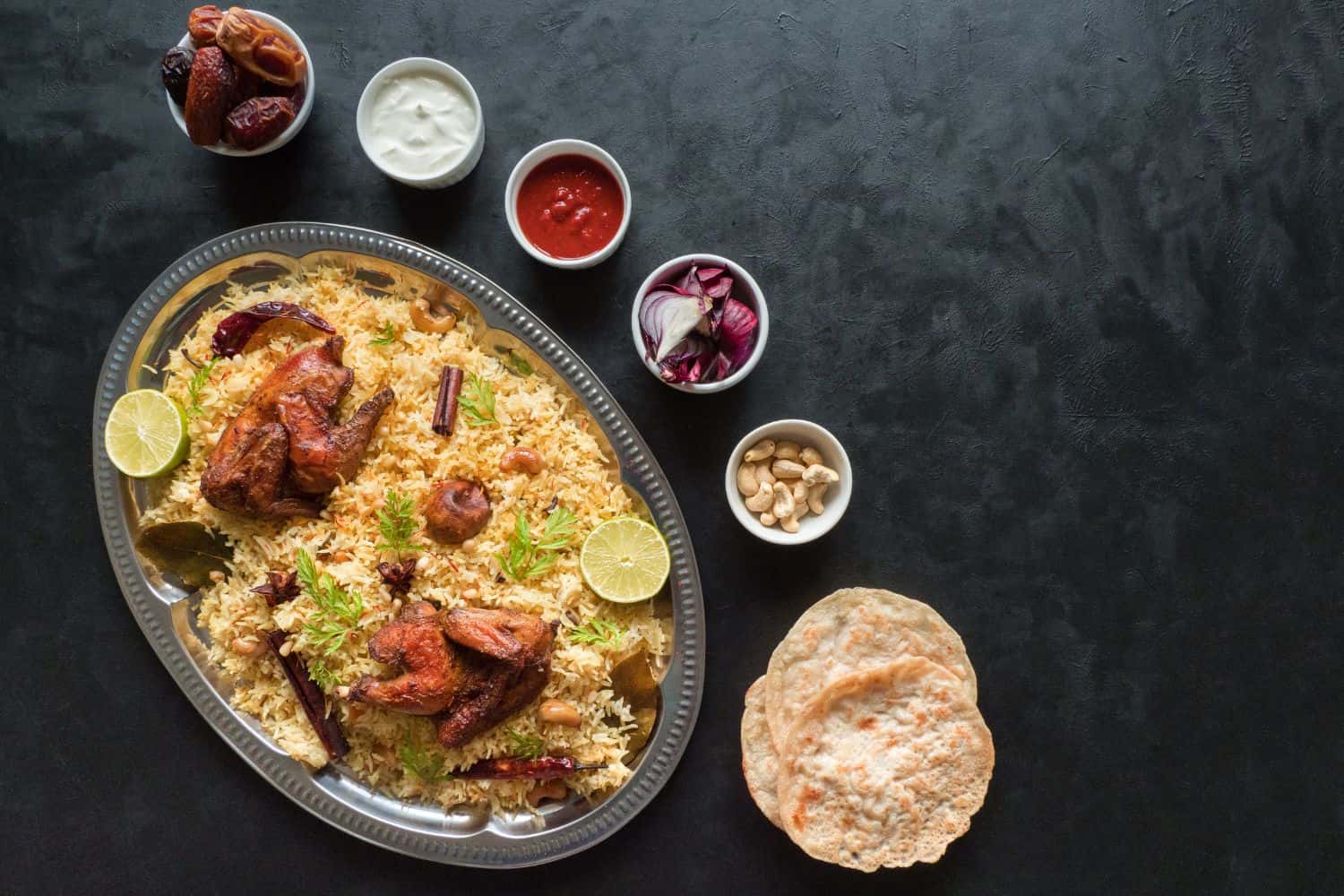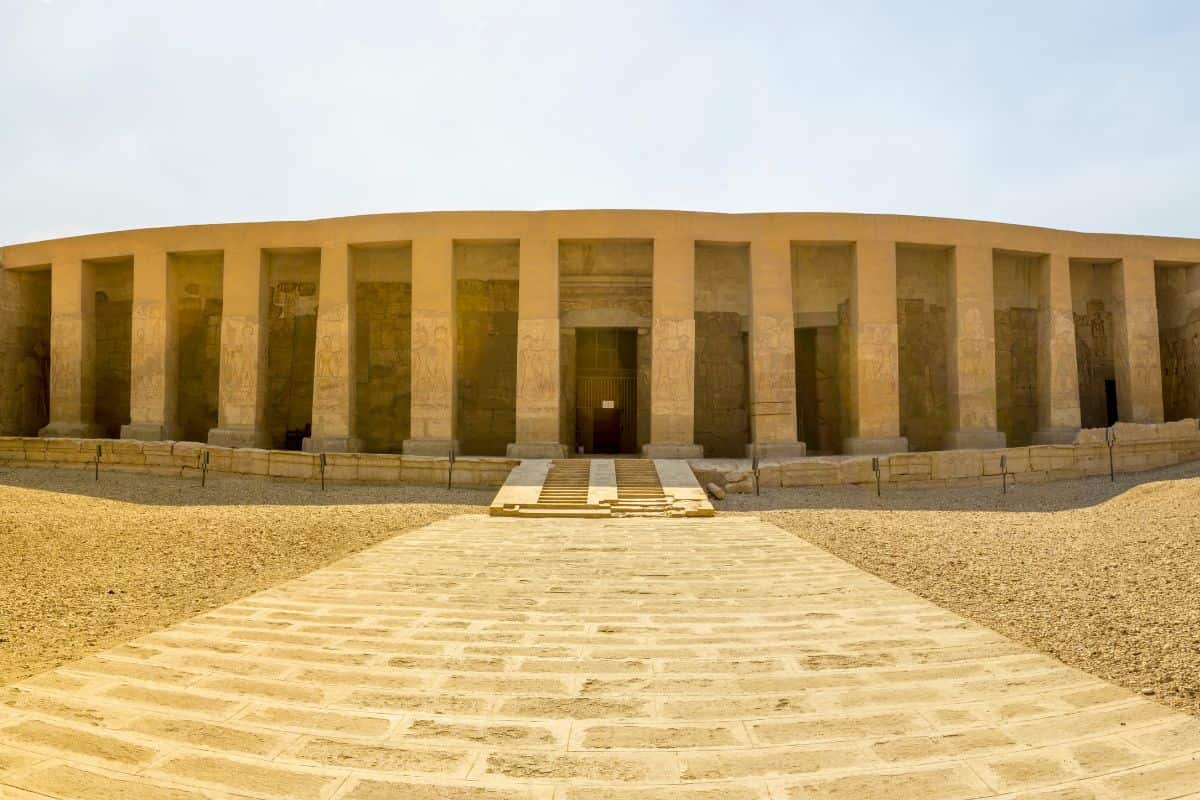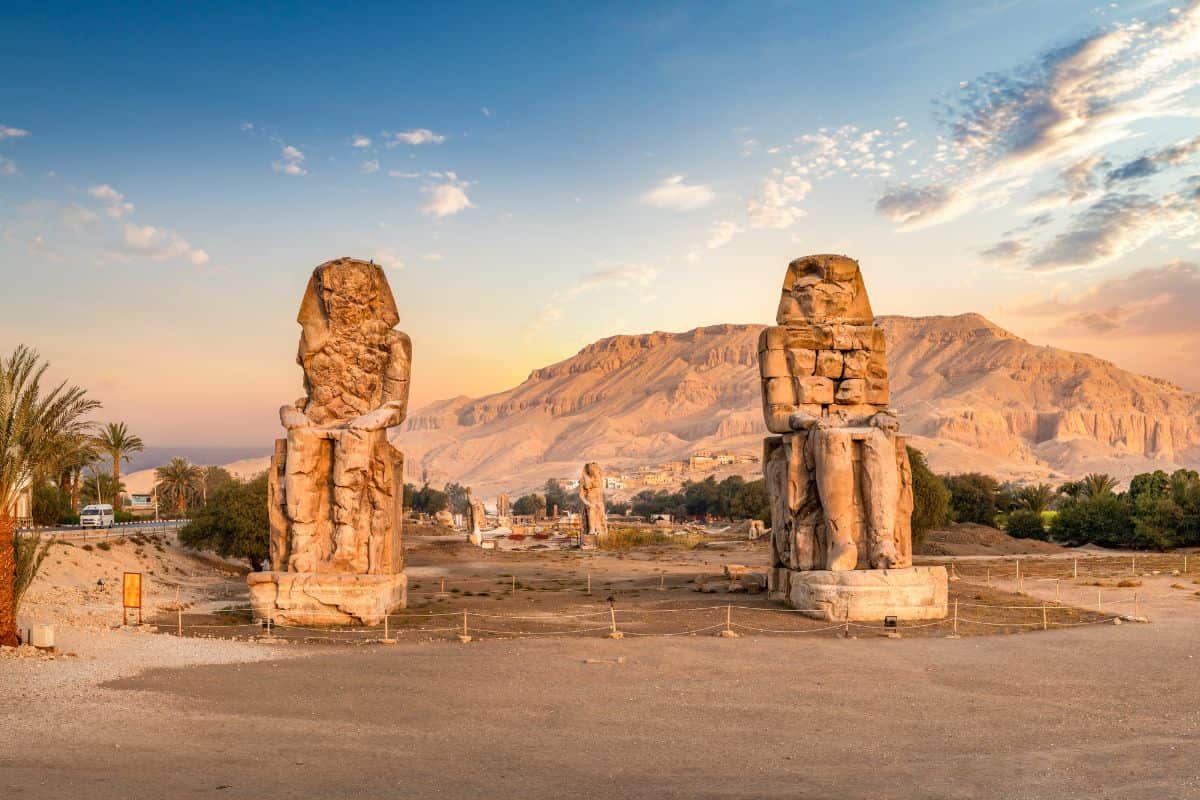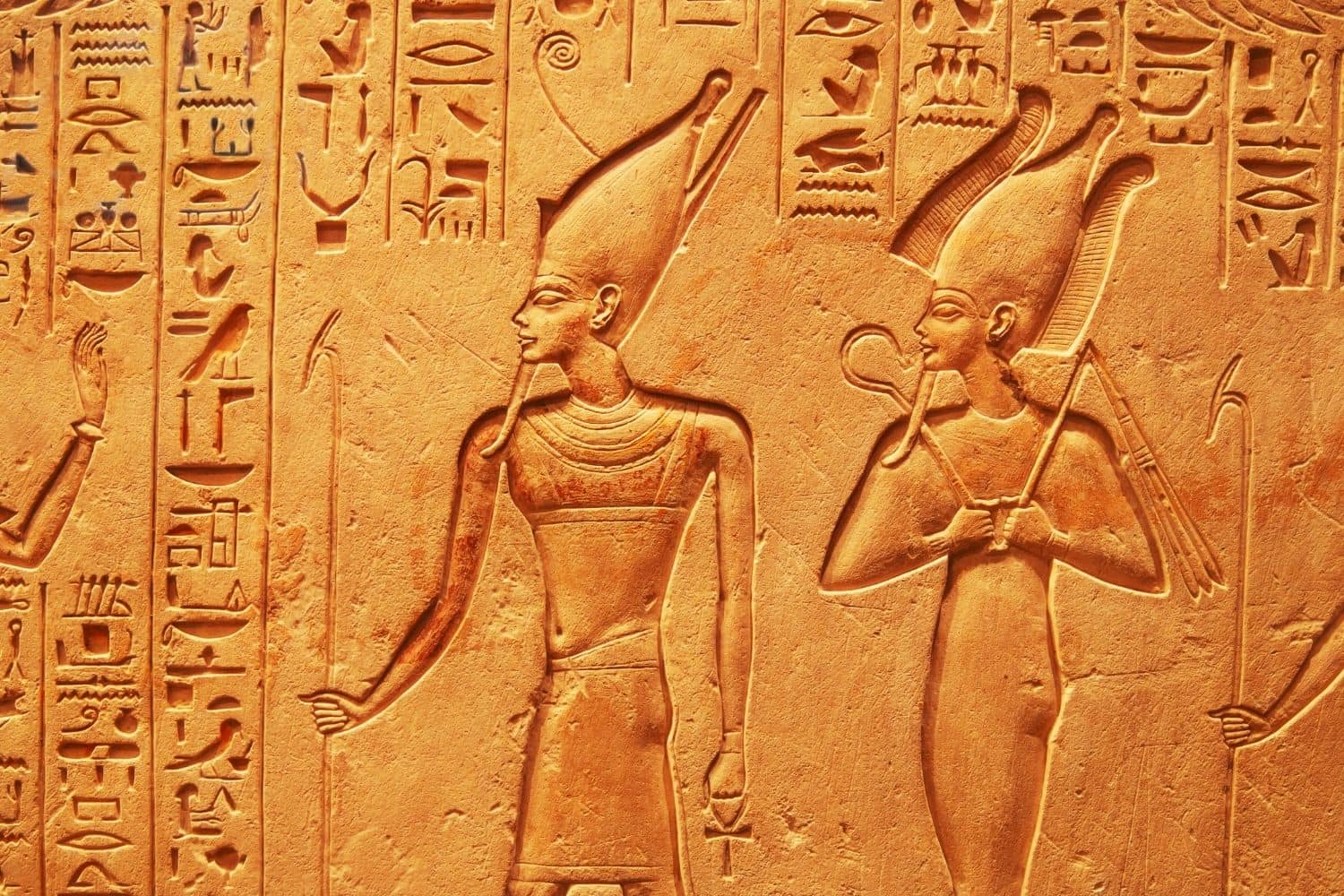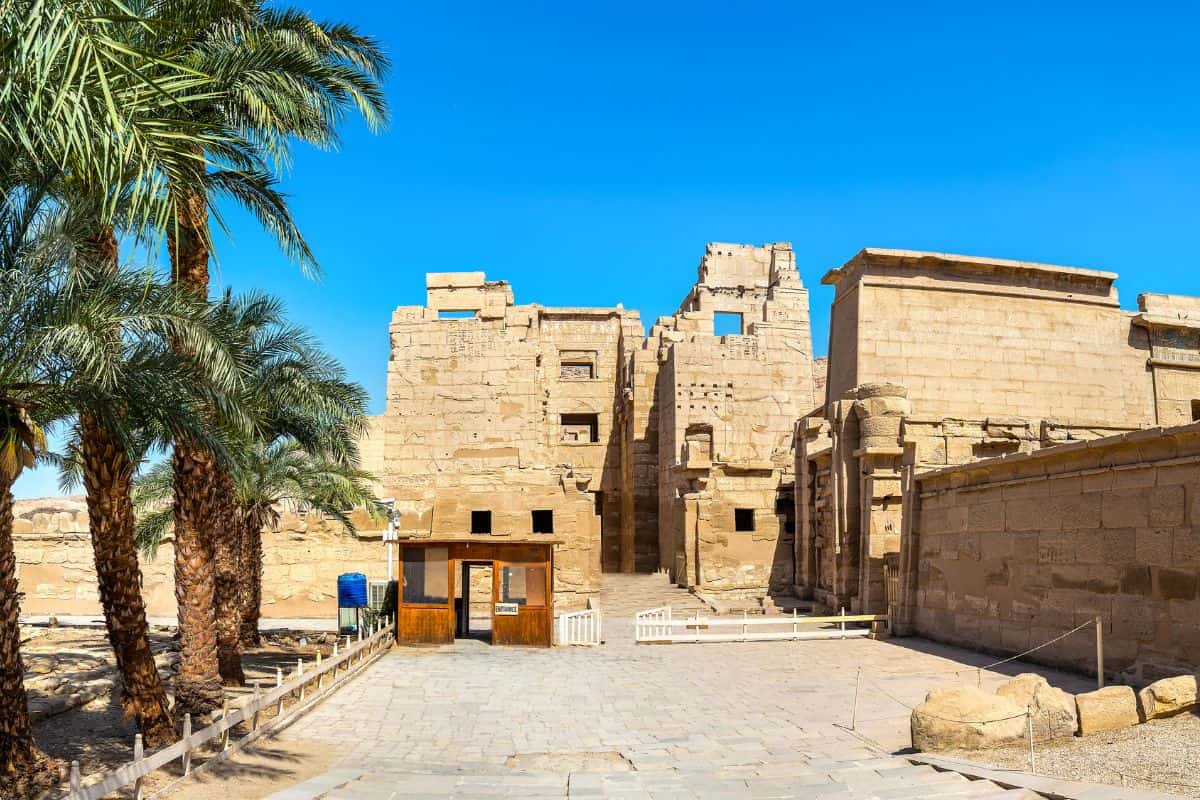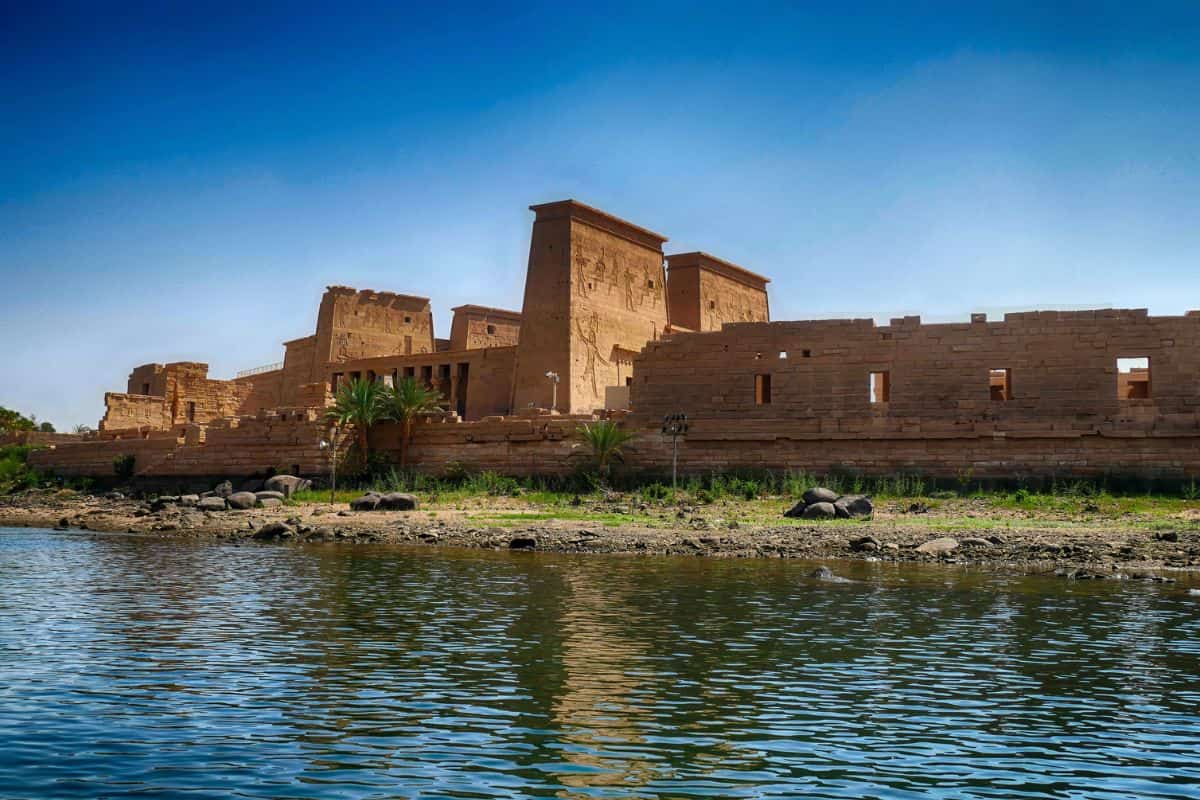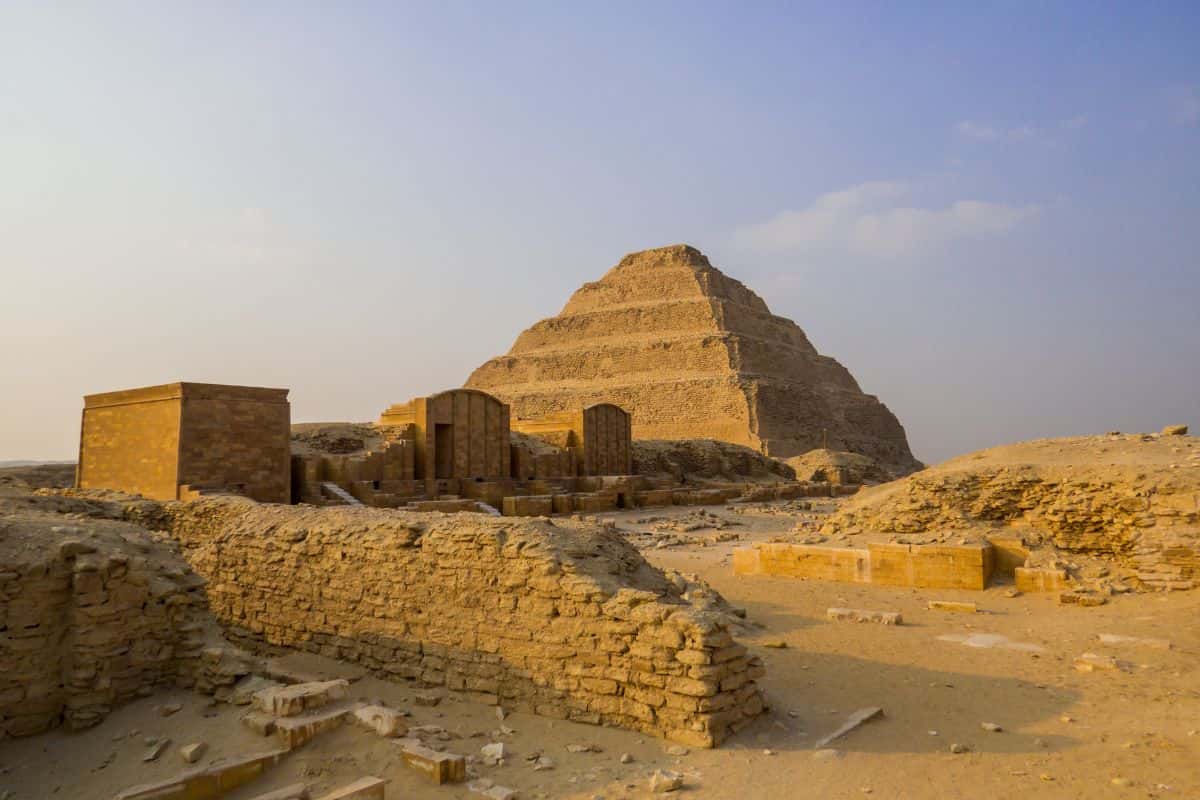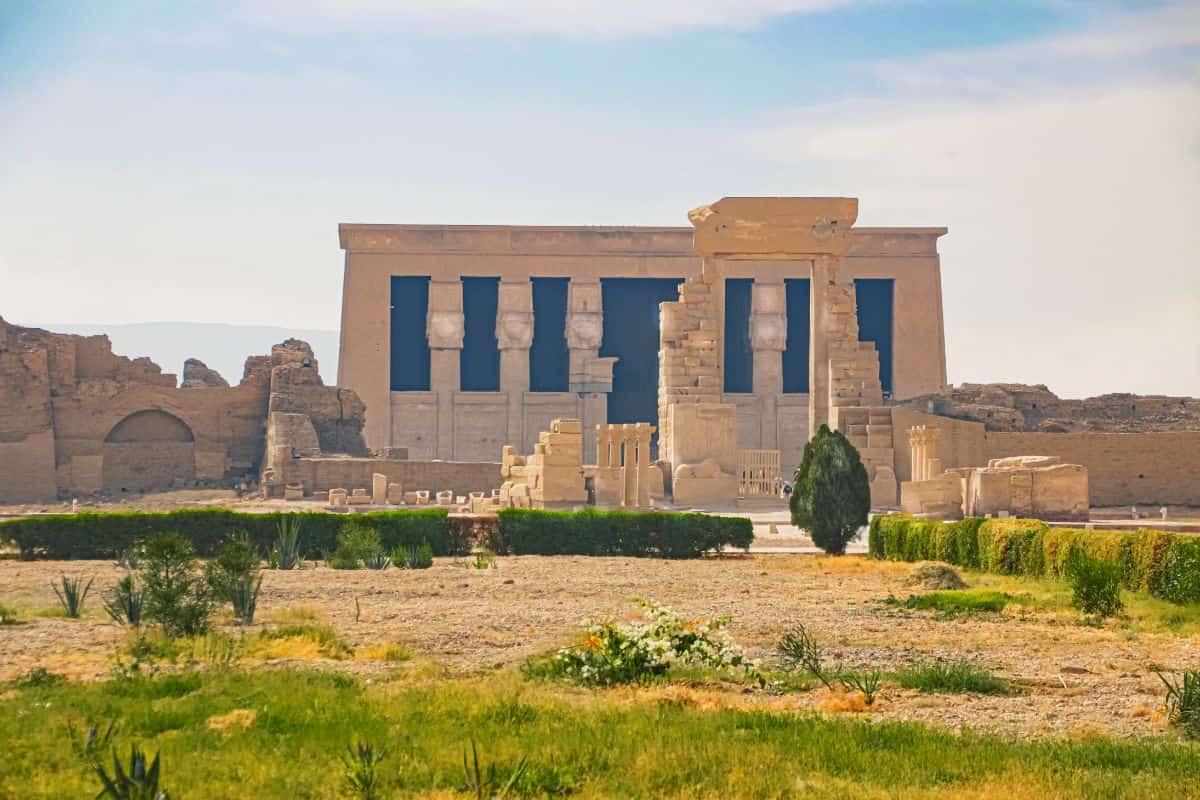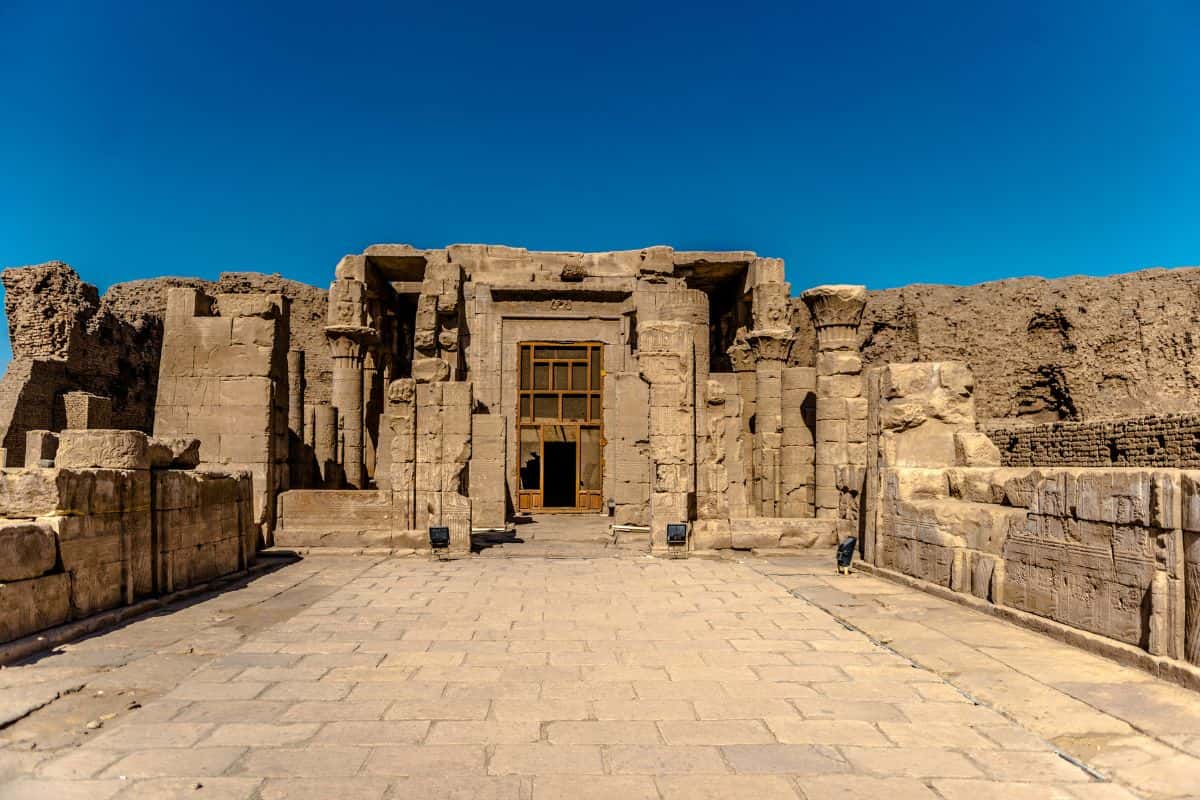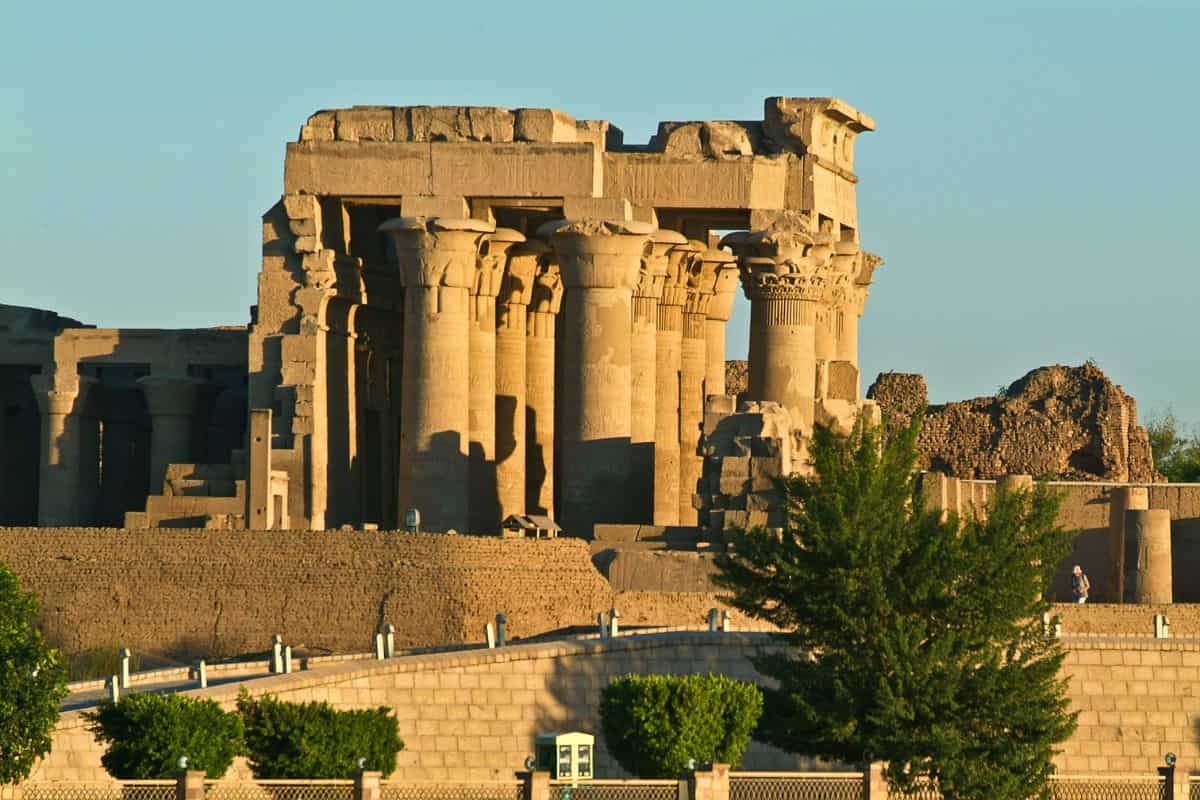Table of Contents
Embarking on a culinary journey through Egypt unveils a captivating tapestry of flavors and cultural heritage. Egyptian cuisine, influenced by ancient Egyptian, Mediterranean, Middle Eastern, and African traditions, offers a delightful fusion of tastes. From beloved traditional dishes to tantalizing street cuisine, Egyptian food is a treasure trove of mouthwatering delights that showcase the richness of its food culture. Let’s dive into this diverse and vibrant world of the food culture of Egypt.
Top Ingredients of Egyptian Cuisine
In the food of Egypt, a rich tapestry of flavors is woven together by skillfully combining various ingredients. Here is a list of the most commonly used ingredients that form the foundation of Egyptian culinary traditions:
Rice: Rice plays a vital role in Egyptian cuisine, often served as a side dish or as the base for dishes like Koshari (a mixture of rice, lentils, and macaroni) and Mahshi (stuffed vegetables with rice and herbs).
Lamb and Beef: Lamb and beef are popular meats in Egypt and are featured prominently in dishes like Kebabs, Molokhia (a leafy green stew), and Hawawshi (spiced meat sandwiches).
Spices: Egyptian cuisine boasts a variety of aromatic spices, including cumin, coriander, cardamom, cinnamon, and cloves, which infuse depth and complexity into their dishes.
Yogurt: Yogurt is a fundamental ingredient in Egyptian cuisine, used in dishes like Kebda Iskandarani (liver cooked in yogurt) and as a refreshing accompaniment to meals.
Onions and Garlic: Onions and garlic are the building blocks of many Egyptian recipes, providing a savory base for soups, stews, and sautéed dishes.
Fava Beans: Fava beans are a staple in Egypt and are used to make Ful Medames, a popular breakfast dish, and Ta’ameya (Egyptian falafel).
Tomatoes: Tomatoes are frequently used in Egyptian cooking to add acidity and depth to various sauces, stews, and salads.
Cilantro and Parsley: Fresh cilantro and parsley are essential herbs in Egyptian cuisine, adding a burst of flavor to dishes like Molokhia and Ta’ameya.
Nuts: Almonds and pine nuts are commonly used in Egyptian cooking, often garnishing dishes like rice pilafs and desserts.
Egyptian Flatbread (Aish Baladi): Bread is a cornerstone of Egyptian meals, and Aish Baladi, a round, rustic flatbread, is enjoyed with a wide range of dishes, including dips and grilled meats.
These ingredients, combined with an array of regional herbs, spices, and other local produce, contribute to the diverse and captivating flavors found in Egyptian food culture.
The variety of food from Egyptian cuisine
Egyptian cuisine boasts a captivating variety of flavors and dishes that reflect the nation’s rich history and cultural diversity. Influenced by Mediterranean, Middle Eastern, North African, and Arabian culinary traditions, Egyptian food offers a unique blend of ingredients and techniques. One of the most renowned dishes is Kushari, a hearty mixture of rice, lentils, macaroni, and chickpeas, topped with a spicy tomato sauce and crispy fried onions. This dish epitomizes Egyptian comfort food and is often enjoyed by locals and visitors alike.
The heartiness of Egyptian cuisine is exemplified in its grilled meats, prepared with various cuts like lamb, chicken, or beef, marinated in a delightful blend of spices. The country’s love for stews is evident in Fatta, a flavorful combination of bread, rice, and meat, typically served with a garlic-infused tomato sauce and yogurt. For a vegetarian option, Molokhia stands out, featuring a green leafy vegetable cooked with garlic, coriander, and spices, served with rice or bread. Another popular choice is Hawawshi, a stuffed pita bread filled with minced meat, onions, and spices, offering a satisfying and savory experience.
Satisfying the sweet tooth, Egyptian cuisine presents delightful desserts like Basbousa, a sweet semolina cake soaked in a rose or orange blossom-scented syrup, commonly enjoyed during festive occasions. The diversity of Egyptian food is further exhibited in its regional specialties, with each area showcasing distinct recipes and culinary techniques. Whether indulging in the savory flavors of Kushari or relishing the sweet taste of Basbousa, exploring the variety of Egyptian cuisine is an adventure in cultural richness and gastronomic pleasure.
While visiting beautiful Egypt, you can try all of the best recipes from Egyptian cuisine. We have available a wide range of Tours in Egypt that you can choose to visit the country.
Best Foods in Egypt
Egypt best foods offer a delightful array of dishes that tantalize the taste buds with their rich flavors and cultural significance. While it’s challenging to single out a definitive list of the “best” foods, some dishes stand out as particularly beloved and iconic in Egyptian cuisine.
Egyptian cuisine is known for its creative use of spices, such as cumin, coriander, cardamom, turmeric, cloves, cinnamon, ginger, garlic, chilies, saffron, black pepper, and dried mint for its rich and flavorful dishes. The result is a harmonious blend of aromatic spices and vibrant herbs that make Egyptian food truly exceptional.
Most famous Egyptian foods
Here are the top most famous foods in Egypt that have garnered recognition both locally and internationally:
Koshari: Widely considered the national dish of Egypt, Koshari is a culinary masterpiece that features a mixture of rice, lentils, macaroni, and chickpeas, topped with a flavorful tomato sauce and crispy fried onions. This dish exemplifies the perfect balance of textures and flavors, making it a favorite at gatherings and street food stalls.
Ful Medames: A symbol of Egyptian breakfast, Ful Medames is a hearty dish made from fava beans simmered with garlic, lemon juice, and olive oil. It’s traditionally served with a side of pita bread and is a nutritious and satisfying start to the day.
Kebabs: Egyptian Kebabs are renowned for their succulent taste and smoky aroma. Whether it’s lamb, chicken, or beef, the meat is marinated in a blend of spices and grilled to perfection. Served with pita bread and tahini sauce, Kebabs are a popular street food and an integral part of Egyptian cuisine.
Molokhia: A staple in Egyptian households, Molokhia is a rich and flavorful stew prepared with jute leaves, meat (often chicken or rabbit), and a medley of aromatic spices. It’s typically enjoyed with rice or flatbread, and the variations in recipes across regions add to its allure.
Hawawshi: Hawawshi is a delicious stuffed pita bread that comes filled with a mixture of spiced ground beef or lamb, onions, and herbs. Grilled until crispy, Hawawshi is a popular snack or street food item, often served with pickles and tahini sauce.
These renowned Egyptian dishes showcase the richness and diversity of the country’s culinary heritage, making them popular not only within Egypt but also among food enthusiasts around the world.
Egyptian Desserts
Egyptian desserts offer a delightful conclusion to a satisfying meal, showcasing a blend of sweet flavors and delicate textures. These desserts are deeply rooted in Egyptian culture and are often enjoyed during celebrations, festivals, and special occasions. Some popular Egyptian desserts include:
Roz Bel Laban: This is one of Egypt’s most cherished desserts, especially during Eid celebrations. Roz Bel Laban is a creamy rice pudding made with milk, sugar, and a medley of nuts like almonds, pistachios, and dates. The combination of luscious milk and the richness of dried fruits makes it an indulgent treat.
Basbousa: A beloved dessert, Basbousa consists of semolina cake soaked in sugar syrup, resulting in a sweet and moist texture. It’s a popular choice during Ramadan and other festive occasions.
Umm Ali: Similar to bread pudding, Umm Ali is a creamy dessert made with layers of pastry, milk, sugar, and fragrant cardamom. It is often garnished with chopped pistachios, almonds, or rose petals, adding a lovely nutty and floral touch.
Baklava: Although Baklava is a dessert with origins in the Middle East, it has become a favorite in Egyptian cuisine. Layers of phyllo pastry are filled with chopped nuts and sweetened with honey or sugar syrup, creating a delectable and flaky treat.
The culture behind Egyptian food
The culture behind Egyptian food is deeply rooted in tradition, hospitality, and community. Egyptian cuisine reflects the country’s rich history and diverse cultural influences, blending elements from Mediterranean, Middle Eastern, North African, and African culinary traditions. Food holds significant cultural importance in Egypt and plays a central role in social gatherings, family events, and religious celebrations.
Hospitality is a cornerstone of Egyptian culture, and sharing food with guests is a deeply ingrained tradition. When visitors arrive at an Egyptian home, they are warmly welcomed with an array of delicious dishes, reflecting the host’s generosity and desire to make their guests feel at home. Meals are often communal affairs, with everyone seated around a shared table, emphasizing the importance of togetherness and solidarity in Egyptian culture.
Also, read:
Cairo, Luxor, and Alexandria
Embark on a culinary journey through Cairo, Luxor, and Alexandria, and indulge in the enchanting flavors that have been cherished for generations in Egypt. Let the traditional foods of each city unveil the vibrant tapestry of Egyptian cuisine, inviting you to relish the unique delights of these remarkable regions.
Within the diverse world of Egyptian gastronomy, every region brings its own distinctive flavors and culinary traditions. Let’s venture to Cairo, Luxor, and Alexandria and explore the delectable variations in their traditional cuisines.
The distinctions in dishes from each Egyptian city can be attributed to a blend of factors, including geographical influences, historical backgrounds, and the predominant ethnic groups residing in each area. Egypt’s varied topography, with its deserts, fertile Nile delta, and coastal regions, has shaped the availability of specific ingredients and agricultural practices, thus giving rise to diversity in the types of dishes that have evolved in each city.
Cairo’s Koshari is a delightful mixture of rice, lentils, pasta, and fried onions, often accompanied by spicy tomato sauce and crispy chickpeas. Luxor’s Ta’amiya, akin to falafel, features deep-fried patties made from ground fava beans, herbs, and spices, offering a satisfying crunch and savory taste. Alexandria’s Seafood Platter boasts an array of fresh catches from the Mediterranean, prepared with aromatic herbs and spices, providing a seafood lover’s paradise.
For instance, in Cairo, as the capital and a melting pot of cultures, the culinary scene is diverse and influenced by a fusion of traditions from various regions and countries. Luxor, with its historical significance and proximity to the ancient temples, often emphasizes vegetarian and legume-based dishes like Ta’amiya. In Alexandria, the coastal location influences a focus on seafood, resulting in delectable dishes like the Seafood Platter.
Comparing the three cities, Cairo offers a wide range of dishes influenced by its cosmopolitan character, Luxor celebrates vegetarian and ancient Egyptian heritage, and Alexandria tantalizes with an abundance of seafood delicacies. Each city proudly exhibits its own culinary identity, contributing to the intricate and flavorful mosaic of Egyptian cuisine.
Cairo
Embarking on our culinary journey in Cairo, the capital city of Egypt, we are welcomed by a vibrant food scene that showcases the country’s diverse culinary influences. The city boasts a delightful fusion of traditional Egyptian dishes and international flavors. As we explore the bustling markets and street food stalls, the enticing aroma of freshly baked bread and grilled meats fills the air. Cairo’s food culture is a melting pot of flavors, offering a wide array of dishes to satisfy every palate.
Famous food from Cairo
- Koshari: A hearty dish made with rice, lentils, macaroni, and chickpeas, topped with a spicy tomato sauce and crispy fried onions.
- Ful Medames: A traditional Egyptian breakfast dish consisting of slow-cooked fava beans seasoned with garlic, lemon, and olive oil, often enjoyed with pita bread.
- Ta’ameya (Egyptian Falafel): Deep-fried patties made from ground fava beans or chickpeas, served with tahini sauce and salad.
- Molokhia: A green leafy soup made from jute leaves, typically cooked with chicken or rabbit, and served with rice or bread.
- Kebda Iskandarani: Grilled liver skewers marinated in a blend of spices, a popular street food delicacy.
- Roz Bel Laban: Creamy rice pudding flavored with rosewater or vanilla and garnished with pistachios or almonds.
Alexandria
Continuing our journey to Alexandria, a city renowned for its coastal beauty and culinary traditions, we find ourselves indulging in a unique blend of Mediterranean and Egyptian cuisine. Alexandria’s cuisine is characterized by fresh seafood and a rich mix of flavors, making it a distinct gastronomic experience.
Famous food from Alexandria
- Seafood Sayadia: A delectable dish featuring fish or seafood, cooked with rice, caramelized onions, and a fragrant blend of spices.
- Baba Ghanoush: A creamy eggplant dip, often served with pita bread and fresh vegetables.
- Fattah: A festive dish made with layers of toasted bread, rice, and meat, topped with a garlic-tomato sauce and garnished with nuts.
- Hawawshi: Spiced ground meat stuffed in pita bread and baked to perfection, a beloved Egyptian street food.
- Mahshi: Vegetables like bell peppers, eggplants, and zucchinis stuffed with a flavorful mixture of rice, herbs, and spices, then simmered in tomato sauce.
- Basbousa: A sweet semolina cake soaked in syrup and garnished with almonds or coconut flakes.
Luxor
Our culinary journey concludes in Luxor, a city steeped in ancient history and known for its robust and flavorful dishes. Luxor’s cuisine is characterized by its use of aromatic spices and ingredients, creating dishes that offer a delightful explosion of flavors.
Famous food from Luxor
- Koshari Luxor: A variation of the classic Koshari with the addition of local spices, giving it a unique twist.
- Ta’amia Luxori (Luxor Falafel): A local take on falafel, prepared with added spices and herbs, often served with tahini sauce.
- Hamam Mahshi: Stuffed pigeon or quail, seasoned with aromatic spices and slow-cooked to perfection.
- Mulukhiyah: A flavorful stew made from mulukhiyah leaves and meat, typically served with rice or bread.
- Mehshi Warak Enab: Grape leaves stuffed with a mixture of rice, herbs, and spices, served with a tangy tomato sauce.
- Roz Bel Laban Luxori: Luxor’s version of creamy rice pudding, infused with local flavors and garnished with nuts and rose petals.
Book Your Trip to Egypt Today!
Embark on an unforgettable journey and explore the allure of Egypt through our exclusive tours.

